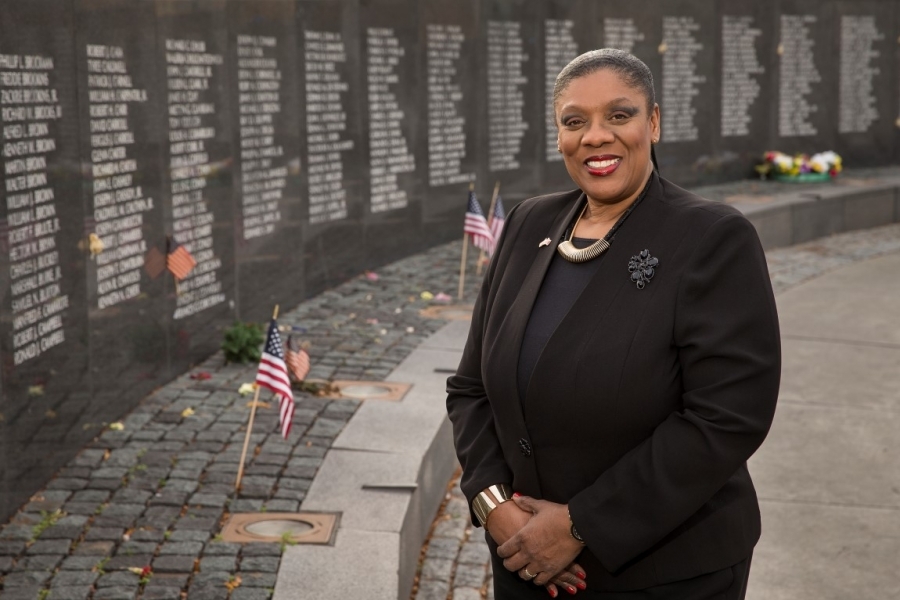HERO’S HERO
<div style="font-size: 13.008px;">More than 1,300 military <span style="font-size: 13.008px;">service members and veterans </span><span style="font-size: 13.008px;">are currently enrolled </span><span style="font-size: 13.008px;">at Temple. There’s a good </span><span style="font-size: 13.008px;">chance that Laura Reddick </span><span style="font-size: 13.008px;">has personally helped each </span><span style="font-size: 13.008px;">one of them.</span></div><div style="font-size: 13.008px;"> </div>
Photography By:
Joseph V. Labolito

With the help of Laura Reddick, military veterans, service members, and their dependents and survivors find a successful university experience at Temple.
LAURA REDDICK
OCCUPATION: Associate director for adult and veteran student recruitment
LOCATION: Main Campus
Perched high above Broad Street in Conwell Hall is the Military and Veteran Services Center. Run by Laura Reddick, the center develops programs and streamlines services to enhance the transition to a successful university experience for veterans, service members, and their dependents and survivors.
It’s often assumed that Reddick is a veteran herself because of her relentless dedication to the military community and her ability to get stuff done with military-esque precision. Though she’s not a veteran, Reddick bares a badge of honor—her work has pushed Temple to become one of the most military-friendly universities in the country.
Why do universities need to establish veterans offices?
The Post-9/11 GI Bill covers full tuition for veterans, which can also be passed on to their dependents and spouses. What I found out is that the bill isn’t easy to navigate, and many veterans don’t fully understand their benefits. We always have to be aware of changing rules and regulations that the U.S. Department of Veterans Affairs implements.
How did you first get involved with veteran students?
I worked in undergraduate admissions at Temple for nearly two decades before moving into my current role. In admissions, one of my responsibilities was working with adult and veteran students. I would help them gain admission, but once they were in, that was the end of my involvement. I started asking myself, “What happens to these students after they get in? What resources do they have?” At that time there was no veteran office or center.
How have you made the Military and Veteran Services Center inclusive to women?
When this office was first created back in 2010, I noticed that all of the programs I was developing were male-dominated. Where were the women? I started reaching out to them, and they expressed that they
faced different challenges and issues than male service members and veterans. I developed the annual Women Veterans Forum—about 100 women showed up to our first one. We talk about transitioning back into civilian life, education, healthcare—everything.